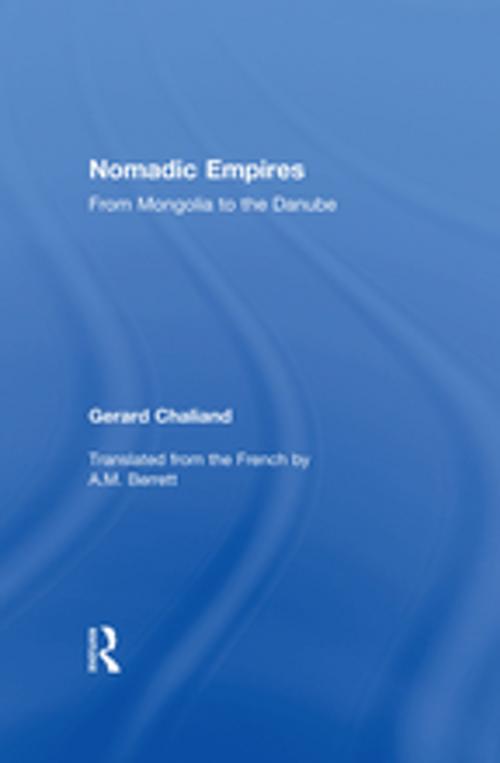| Author: | ISBN: | 9781351502924 | |
| Publisher: | Taylor and Francis | Publication: | December 2, 2017 |
| Imprint: | Routledge | Language: | English |
| Author: | |
| ISBN: | 9781351502924 |
| Publisher: | Taylor and Francis |
| Publication: | December 2, 2017 |
| Imprint: | Routledge |
| Language: | English |
"Nomadic Empires sheds new light on 2,000 years of military history and geopolitics. The Mongol Empire of Genghis-Khan and his heirs, as is well known, was the greatest empire in world history. For 2,000 from the fifth century b.c. to the fifteenth century a.d., the steppe areas of Asia, from the borders of Manchuria to the Black Sea, were a ""zone of turbulence,"" threatening settled peoples from China to Russia and Hungary, including Iran, India, the Byzantine empire, and even Syria. It was a true world stage that was affected by these destructive nomads.This cogent, well-written volume examines these nomadic people, variously called Indo-Europeans, Turkic peoples, or Mongols. They did not belong to a sole nation or language, but shared a strategic culture born in the steppes: a highly mobile cavalry which did not require sophisticated logistics, and an indirect mode of combat based on surprise, mobility, and harassment. They used bows and arrows and, when they were united under the authority of a strong leader, were able to become a deadly threat to their sedentary neighbors.Chaliand addresses the subject from four perspectives. First, he examines the early nomadic populations of Eurasia, and the impact of these nomads and their complex relationships with settled peoples. Then he describes military fronts of the Altaic Nomads, detailing events from the fourth century b.c. through the twelfth century a.d., from the early Chinese front to the Indo-Iranian front, the Byzantine front, and the Russian front. Next he covers the undertakings of the great nomad conquerors that brought about the Ottoman Empire. And finally, he describes what he calls ""the revenge of the sedentary peoples, exploring Russia and China in the aftermath of the Mongols. The volume includes a chronology and an annotated bibliography. Now in paperback, this cogent, well-written volume examines these nomadic people, variously called Indo-Europeans, Turkic peoples, or "
"Nomadic Empires sheds new light on 2,000 years of military history and geopolitics. The Mongol Empire of Genghis-Khan and his heirs, as is well known, was the greatest empire in world history. For 2,000 from the fifth century b.c. to the fifteenth century a.d., the steppe areas of Asia, from the borders of Manchuria to the Black Sea, were a ""zone of turbulence,"" threatening settled peoples from China to Russia and Hungary, including Iran, India, the Byzantine empire, and even Syria. It was a true world stage that was affected by these destructive nomads.This cogent, well-written volume examines these nomadic people, variously called Indo-Europeans, Turkic peoples, or Mongols. They did not belong to a sole nation or language, but shared a strategic culture born in the steppes: a highly mobile cavalry which did not require sophisticated logistics, and an indirect mode of combat based on surprise, mobility, and harassment. They used bows and arrows and, when they were united under the authority of a strong leader, were able to become a deadly threat to their sedentary neighbors.Chaliand addresses the subject from four perspectives. First, he examines the early nomadic populations of Eurasia, and the impact of these nomads and their complex relationships with settled peoples. Then he describes military fronts of the Altaic Nomads, detailing events from the fourth century b.c. through the twelfth century a.d., from the early Chinese front to the Indo-Iranian front, the Byzantine front, and the Russian front. Next he covers the undertakings of the great nomad conquerors that brought about the Ottoman Empire. And finally, he describes what he calls ""the revenge of the sedentary peoples, exploring Russia and China in the aftermath of the Mongols. The volume includes a chronology and an annotated bibliography. Now in paperback, this cogent, well-written volume examines these nomadic people, variously called Indo-Europeans, Turkic peoples, or "















